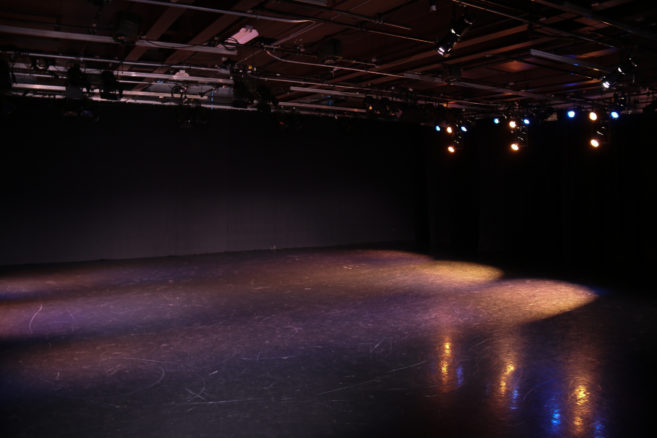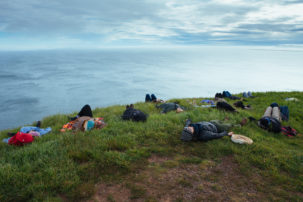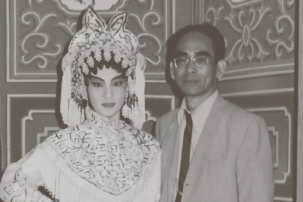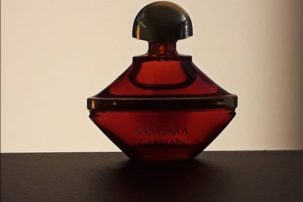“Great, here we go again,” I thought, when I first read “Drawn From Poverty: Art Was Supposed to Save Canada’s Inuit. It Hasn’t,” Catherine Porter’s recent New York Times article about Kinngait (Cape Dorset) art and community.
My whole life I’ve witnessed various journalists from the South telling the same story: life for Indigenous People in the North is not easy—“it may shock you.” Along with this cautionary line, the author usually provides a smattering of basic facts about Canadian history and colonialism, and, if we’re lucky, throws in a platitude about how Inuit still have a bright spirit that shines through in our art or connection to the Land. After spending an exorbitant amount on airfare and a few days in the North, the Southern storyteller inevitably leaves with whatever interpretations confirm their preconceptions. Knowledge is extracted—and if we’re lucky, some context as well—and then we never hear from them again. Lather, rinse, repeat.
“Drawn from Poverty” is dripping with the prejudice of someone unfamiliar with the North, someone writing about “them” and not “us.” It portrays Inuit as people with problems and not solutions. Trauma and poverty porn are the classic low-hanging fruits of Northern reporting. The headline—“Drawn From Poverty: Art Was Supposed to Save Canada’s Inuit. It Hasn’t.”—ignores Inuit agency, depicting Kinngait artists and residents as possessions of Canada in need of salvation.
Ostensibly, the article follows celebrated Inuk artist Ooloosie Saila and the Inuit community in which she lives and works. But from the title onwards, Porter (who is the New York Times Canadian bureau chief)—and, crucially, her editors—make clear they do not want to celebrate our triumphs or what we share, only highlight our tragedies and our difference. Why else would the article include the words of a passerby in Toronto (“An Eskimo—look!”) for any reason other than to make Saila the Other in the eyes of a reader? Porter introduces Saila as “cowering in fear” during a moment of domestic violence—a moment she then uses to define Saila for the rest of the story. She portrays Saila as impoverished, but that (very relative) definition is deeply inflected by a Southern point of view. It’s not easy being an artist or a single parent anywhere, and I wonder if Porter would have described a Southern artist and single parent the same way. Though many Kinngait artists face financial challenges, as many artists elsewhere do, Saila is rich in her connections to culture, to community, to the Land.
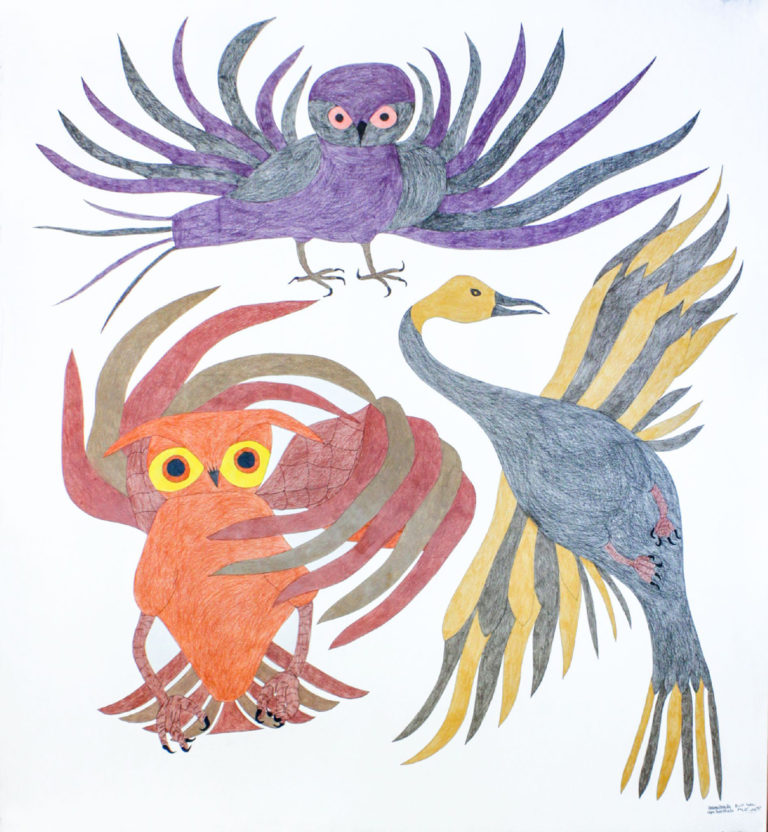 Ooloosie Saila, Composition (Three Birds), 2016. Coloured pencil and ink on paper, 54 x 50 in. Courtesy Feheley Fine Arts. Reproduced with the permission of Dorset Fine Arts/West Baffin Eskimo Cooperative.
Ooloosie Saila, Composition (Three Birds), 2016. Coloured pencil and ink on paper, 54 x 50 in. Courtesy Feheley Fine Arts. Reproduced with the permission of Dorset Fine Arts/West Baffin Eskimo Cooperative.
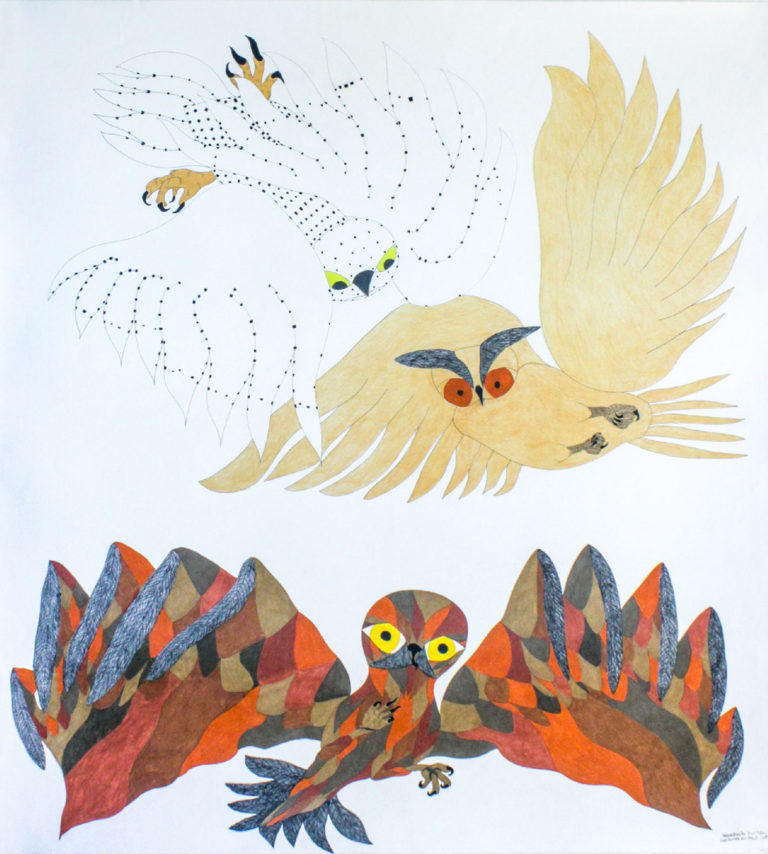 Ooloosie Saila, Composition (Three Owls), 2016. Coloured pencil and ink on paper, 53 x 47.5 in. Courtesy Feheley Fine Arts. Reproduced with the permission of Dorset Fine Arts/West Baffin Eskimo Cooperative.
Ooloosie Saila, Composition (Three Owls), 2016. Coloured pencil and ink on paper, 53 x 47.5 in. Courtesy Feheley Fine Arts. Reproduced with the permission of Dorset Fine Arts/West Baffin Eskimo Cooperative.
Of the piece’s 3155 words, fewer than 100 are Saila’s. And while there may be some difficulties in incorporating Inuit cadence into succinct quotations for a newspaper, Porter’s portrayal of Saila feels prescribed, even anthropological. She cherry-picks moments in Saila’s life that are cruel and unnecessary, and which do not showcase her work as an artist or tell us who she is.
Indeed, the article hardly features Saila’s artwork at all, which is bizarre given that Porter describes her as a rising star in Inuit art, but never specifies why. Even when Porter describes Saila’s work, it is done through the interpretation of Southern curators and collectors, and we are never provided Saila’s or an Inuit understanding of her work. Saila’s work, such as her Silaksiaq (Beautiful Day) (2019), depicts a vibrant Arctic landscape that contrasts the stark depictions traditionally produced by Southern artists; her Northern landscapes are the antithesis of Group of Seven painter Lawren Harris’s sterile icebergs. What Saila presents is not the view of the visitor, but the perspective of someone who is at home with the Land, waters and ice—someone who sees the beauty and life teeming within.
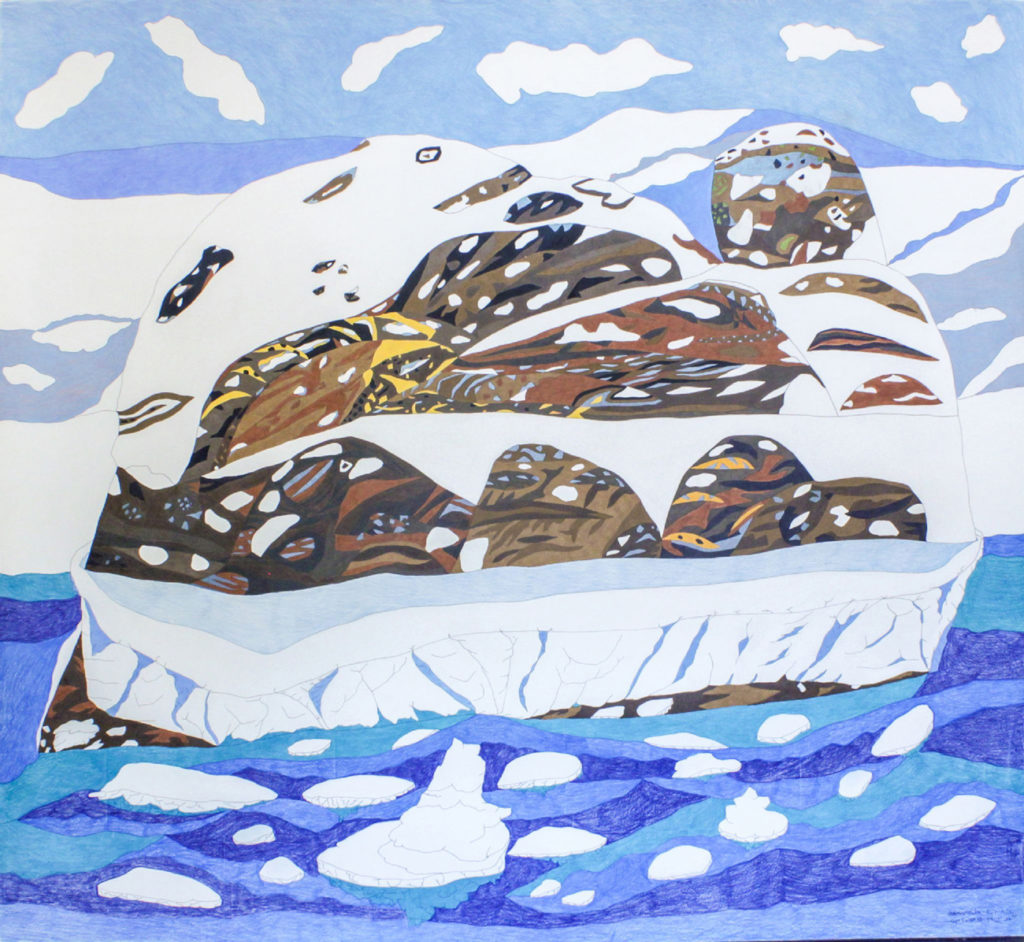 Ooloosie Saila, Composition (Water, Ice and Mountains), 2017. Coloured pencil and ink on paper, 50 x 54.5 in. Courtesy Feheley Fine Arts. Reproduced with the permission of Dorset Fine Arts/West Baffin Eskimo Cooperative.
Ooloosie Saila, Composition (Water, Ice and Mountains), 2017. Coloured pencil and ink on paper, 50 x 54.5 in. Courtesy Feheley Fine Arts. Reproduced with the permission of Dorset Fine Arts/West Baffin Eskimo Cooperative.
Not only are stories like Porter’s damaging in that they prevent real dialogue between North and South; they’re also derivative and boring. Still, even Porter acknowledges that the Canadian nationalist idea of “We the North” derives largely from the South. It’s an opportunity to expose the inequality that characterizes the relationship between Inuit art production and the Southern markets that benefit substantially more than the artists themselves. But instead of exploring this divide as a way to learn about Inuit and what really separates the North and the South, it’s used as another opportunity to make Inuit the Other.
For many Inuit, this type of journalism is a hurtful reminder that not only do Southerners not understand us, they’re not even trying to. It is a betrayal when a journalist attentively listens to you explain your world, only to later selectively and sensationally report those stories with little consultation.
The media pays the North no heed when our lives and communities are going well. They wait for the sensational; they wait for the pain, the guilt. The people in these stories become narrative devices in service of a Southern fantasy.
What is most troubling is just how common this is: rehashing our traumas for a removed audience’s amusement. Our traumas are on display in the media, but our triumphs are often ignored. This is because popular media rarely celebrates Indigenous Peoples living, surviving and thriving in the North. Instead it collects data, sending white protagonists from the South “adventuring” in “exotic” Northern locales, engaging in activities that for Inuit simply make up our day-to-day lives. The end result is that the media pays the North no heed when our lives and communities are going well. They wait for the sensational; they wait for the pain, the guilt. The people in these stories lose their humanity, their autonomy; they become narrative devices in service of a Southern fantasy.
In the 1950s, Southern Canadian artist James Houston began a series of Inuit-owned art co-ops with the aim of producing art for Southern buyers. For many Inuit communities, art co-ops are pillars of the community. While Porter portrays them as a place to make booze money or to escape violence at home, these institutions have become centres of community life where skills and traditions are passed on. Still, this beloved network of co-ops is not above reproach, and has been criticized for locking Inuit in to certain styles of art—primarily painting, printing and carving—demanded by removed Southern audiences, and for locking them out of the wider markets that circulate their work. And while these co-ops have become important to many Inuit communities and have produced important Inuit works of art, framing them as some sort of fallen saviour is a patronizing Southern perception.
The main message is that Inuit are alive. We are here, we exist—and we are a modern people with something to say.
While no one is arguing that the traumas of colonization do not run deep through Inuit communities, Southern media nonetheless needs to recognize Inuit stories as more than trauma, more than a way to make privileged Southerners feel things. If Porter were to look more broadly at the Inuit art market, she would find a wide variety of perspectives and understandings. There is no shortage of Inuit artists with something to say. Take, for example, the stunning Arctic landscapes of Pangnirtung-based photographer David Kilabuk; the haunting stage performances of Laakkuluk Williamson Bathory; the intricate and detailed stone sculptures by master carver Billy Gauthier; the humour and modernity of contemporary artist Kablusiak; the forward-thinking works of multidisciplinary artist Niap; and the socially conscious multimedia works of Jesse Tungilik.
The Inuit music industry is thriving too, with groups such as the Jerry Cans performing at the Juno awards, and singers Elisapie Isaac, Beatrice Deer, Kelly Fraser and many others releasing celebrated studio albums. These performers sing of love, life, culture, friendship, heartache and everything else you’d hear in popular music today. Inuit crafting and fashion design are experiencing a renaissance: young Inuit designers such as Hinaani, Inuuvunga and Victoria’s Arctic Fashions make clothing fitting snowmobiling on the tundra or walking down Montreal’s rue Ste-Catherine.
Through their works, all of these artists are embracing the past, but the main message is that Inuit are alive. We are here, we exist—and we are a modern people with something to say.
 Ooloosie Saila, Long Landscape, 2018. Coloured pencil on paper, 30 x 92 in. Courtesy Feheley Fine Arts. Reproduced with the permission of Dorset Fine Arts/West Baffin Eskimo Cooperative.
Ooloosie Saila, Long Landscape, 2018. Coloured pencil on paper, 30 x 92 in. Courtesy Feheley Fine Arts. Reproduced with the permission of Dorset Fine Arts/West Baffin Eskimo Cooperative.
Southerners writing about visiting Northern Indigenous communities for the first time, or bragging about how they know people there, are tired clichés. What else is left to learn? We’ve been bombarded with these stories since the lurid Victorian adventures of the penny dreadful. We don’t need any more stories about Southern perspectives on the North. We instead need to champion stories told by Northerners, who understand the subtleties, histories and cultures of their own lives. In an increasingly connected world, we now have the ability to share and hear new voices reimagine, reinterpret and reinvigorate older narratives into stories to help us all grow and understand.
We should look to media outlets like Iqaluit’s Nunatsiaq News, Inuit journalists such as CBC North’s Madeleine Allakariallak or the poignant and thoughtful films of Alethea Arnaquq-Baril. I encourage you to read Ooloosie Saila’s response to Porter’s article in an interview with APTN National News, in which she says Porter did not speak to her at all about poverty and that she was upset her artwork was not featured in the article. On November 1, the Native American Journalists Association called on the New York Times and Porter to apologize, and to perform an audit to look into how the article, which they say is harmful to Inuit, was approved and published. They also asked that the Times hire more Indigenous journalists and editors. When a Times spokesperson responded, the Association was unsatisfied, and called for a second apology.
While art is a vital form of expression for a people, it will not “save” anyone from centuries of colonialism…Inuit art is thriving and evolving despite these histories.
So what can Southern journalists and editors offer? They can learn our history, our culture, our way of life, so that their reporting is accurate and respectful. Journalists must make their reporting relationship-based; they must also continue those relationships after the story of the day finishes. We need journalists to understand that they can, and should, explain to their audiences how state and industrial powers dispossessed Inuit, cutting many of them off from the Land and their way of life. While art is a vital form of expression for a people, it will not “save” anyone from centuries of colonialism, forced relocations, residential schools, environmental destruction, climate change, loss of language, loss of culture, vilification of traditional foods, destruction of way of life or any of the other difficulties Inuit have faced. Inuit art is thriving and evolving despite these histories.
We cannot rely on clichés of the past that depict Inuit as helpless or without autonomy. Instead, journalists must show the whole picture, not just highlighting struggle, but showing how Inuit are taking control of their lives and their communities. With fair and accurate reporting, we can all begin a conversation that flows both North and South, enriching us all.

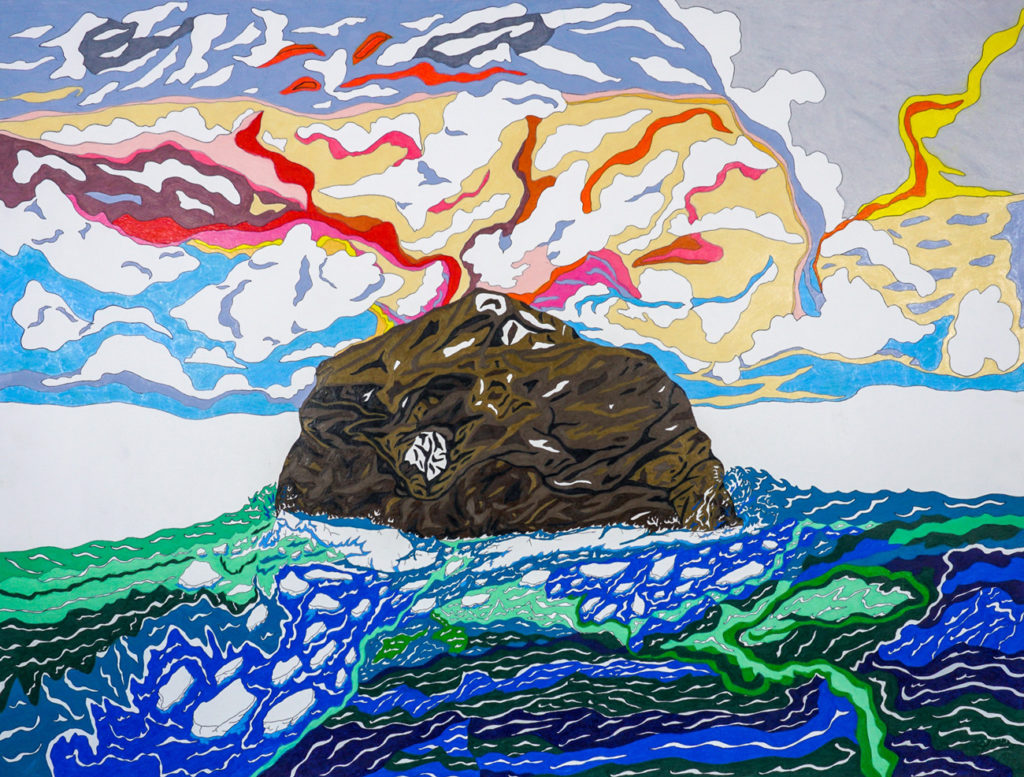 Ooloosie Saila, Psychadelic Landscape, 2019. Coloured pencil and ink on paper, 23 x 29.8 in. Courtesy Feheley Fine Arts. Reproduced with the permission of Dorset Fine Arts/West Baffin Eskimo Cooperative.
Ooloosie Saila, Psychadelic Landscape, 2019. Coloured pencil and ink on paper, 23 x 29.8 in. Courtesy Feheley Fine Arts. Reproduced with the permission of Dorset Fine Arts/West Baffin Eskimo Cooperative.
